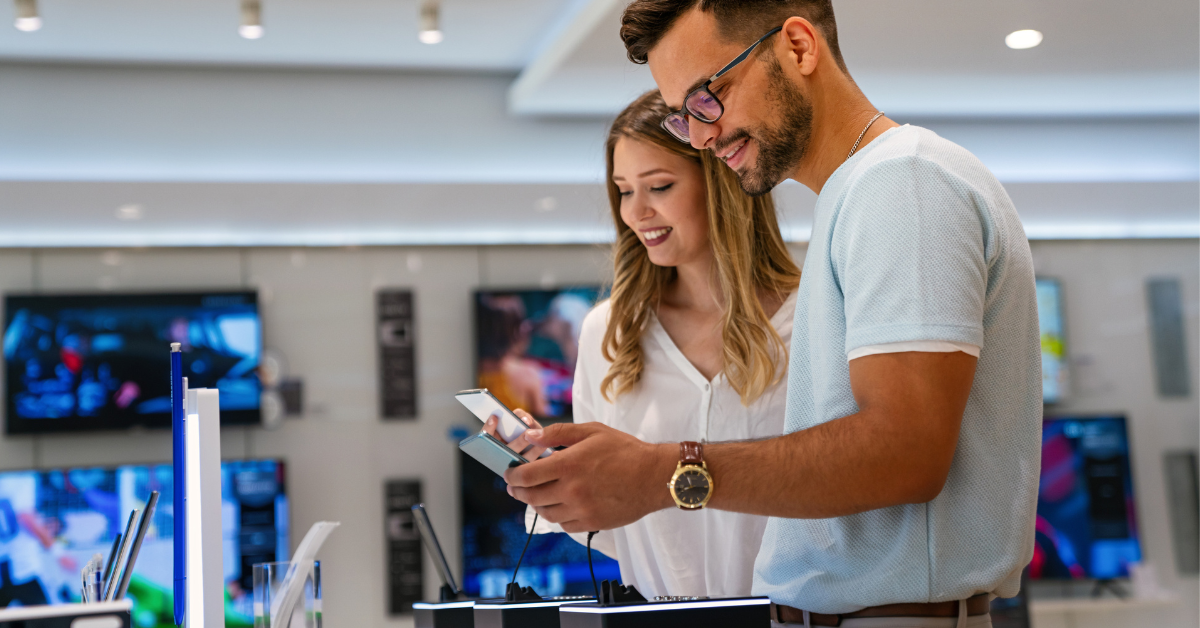Growing the world's leading brands, commerce-first.
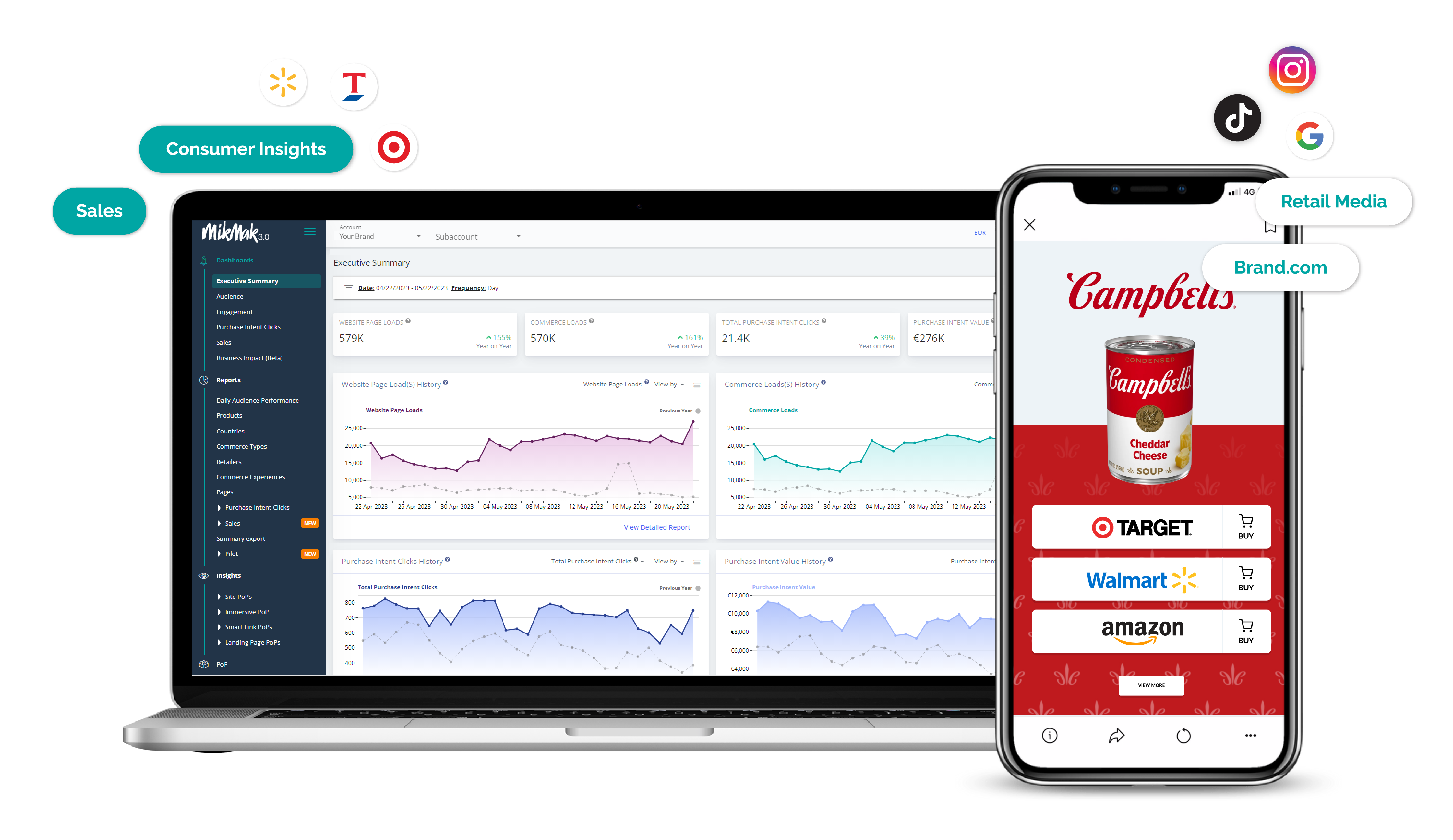






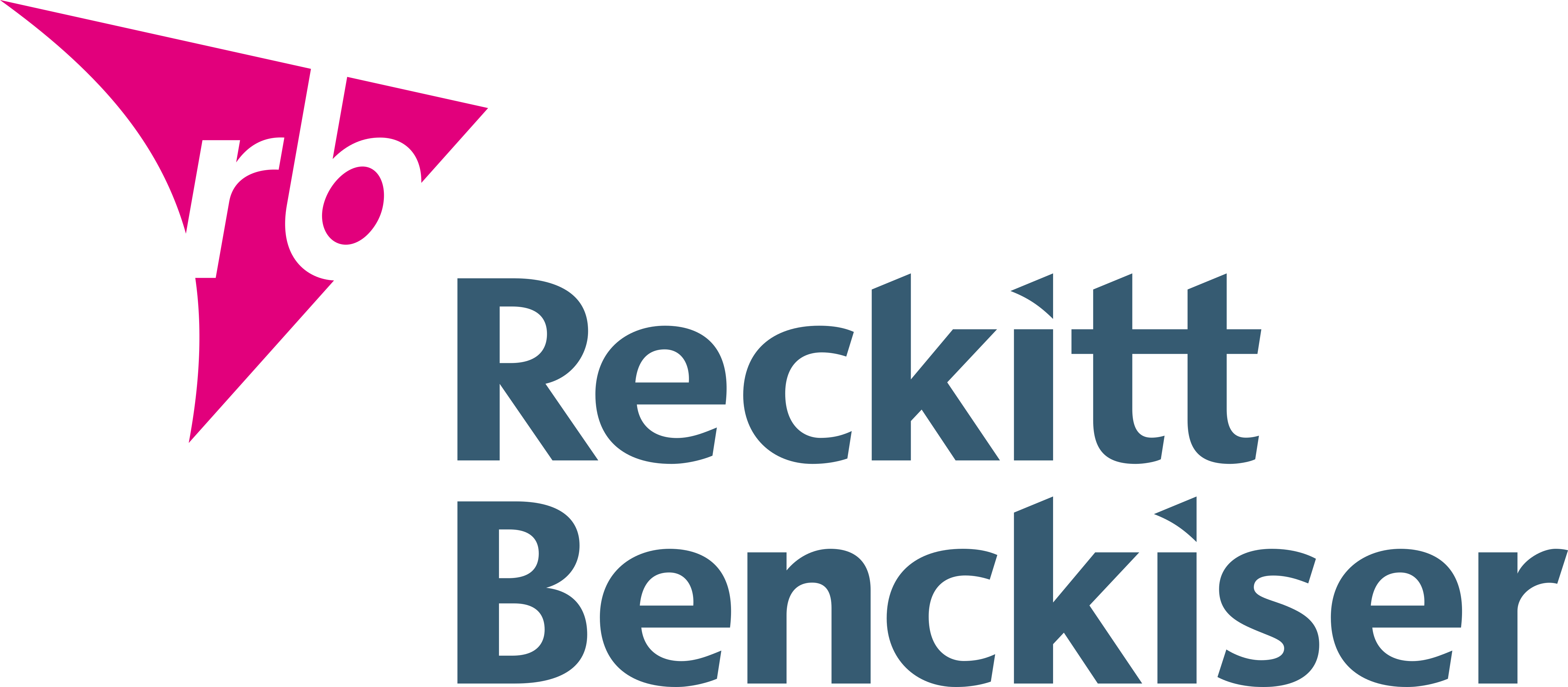










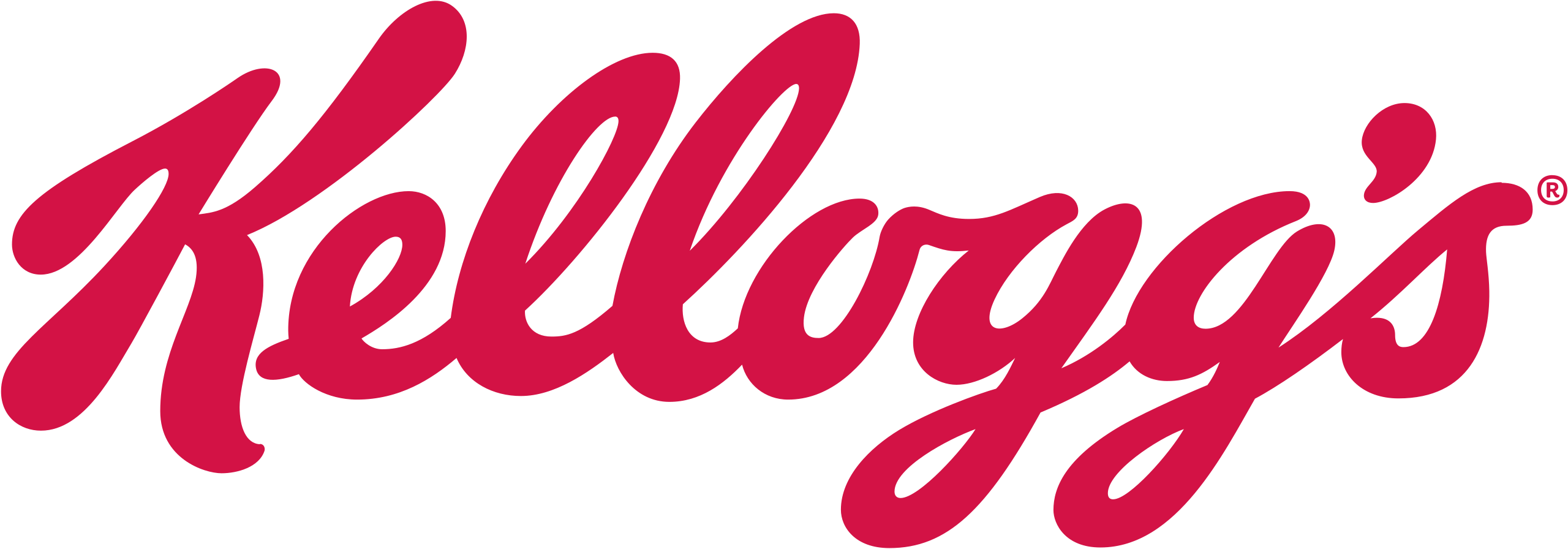
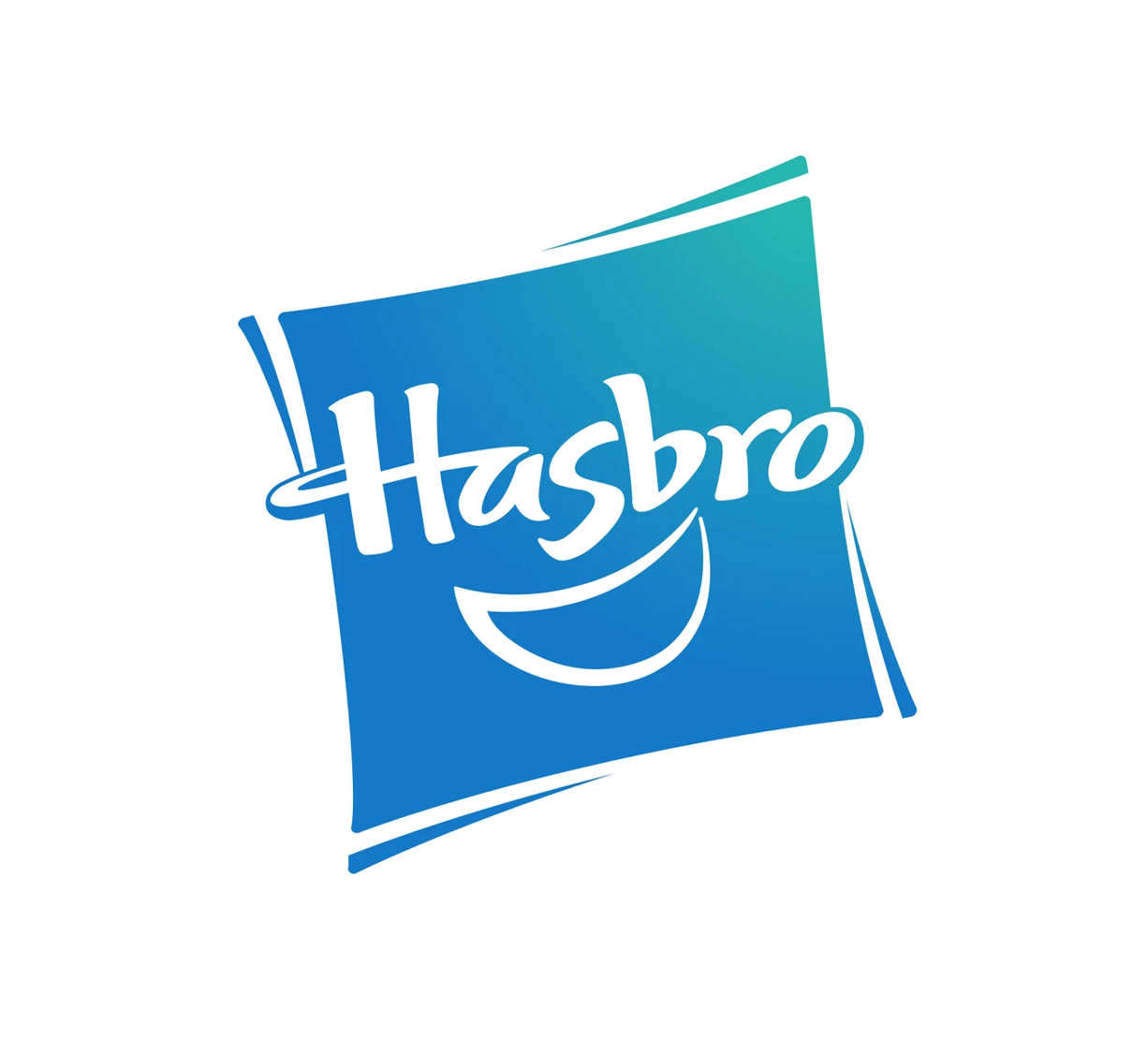

We grow brands commerce-first, globally. Spanning 100 countries and 7000 Media & Retailer Partners Worldwide. Our brand, retailer, and consumer insights will guide and impact decision-making across your entire organization to drive real business results.
Accelerate Sales and Market Share
- Make your products discoverable
Across all media and brand websites, shoppers worldwide will find and buy your products faster, in-store and online - Beat the competition
Know, compare, and optimize your performance against brands in your category by channel, retailer, and more - Strengthen retailer partnerships
Use proprietary, retailer-specific consumer insights in joint planning discussions to unlock shelf space and media value
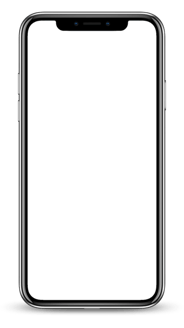
Drive Profitability and Reduce Costs
- Improve marketing effectiveness
Understand and spend on the online and offline channels, campaigns, creative, and audiences that actually convert - Collect first-party data
Own and have a consolidated view of your consumer data and audiences to improve performance and lower costs - Save time and money
One easy-to-use global platform automatically enables consistent reporting and fast decision-making across the entire organization
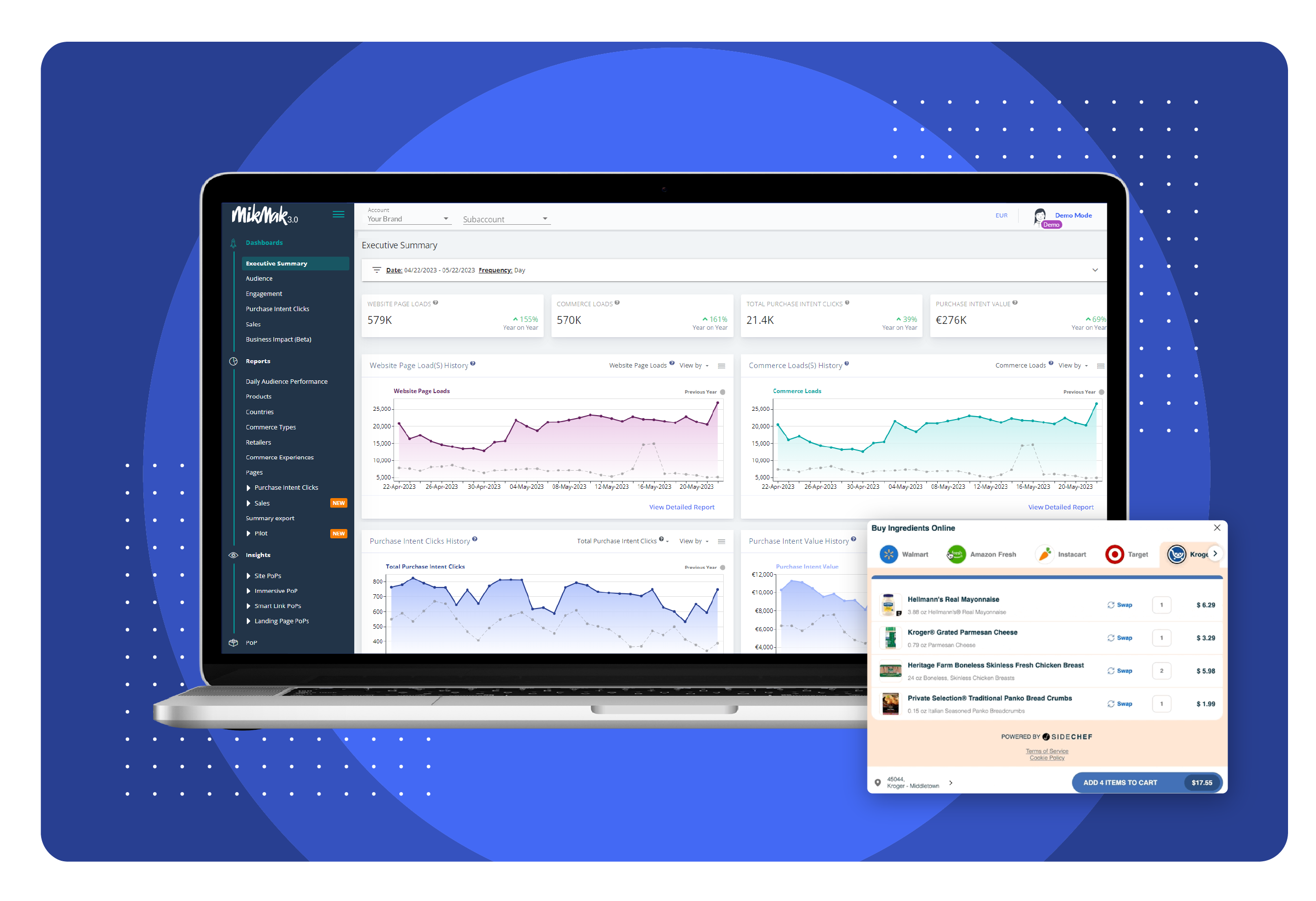
The MikMak Platform
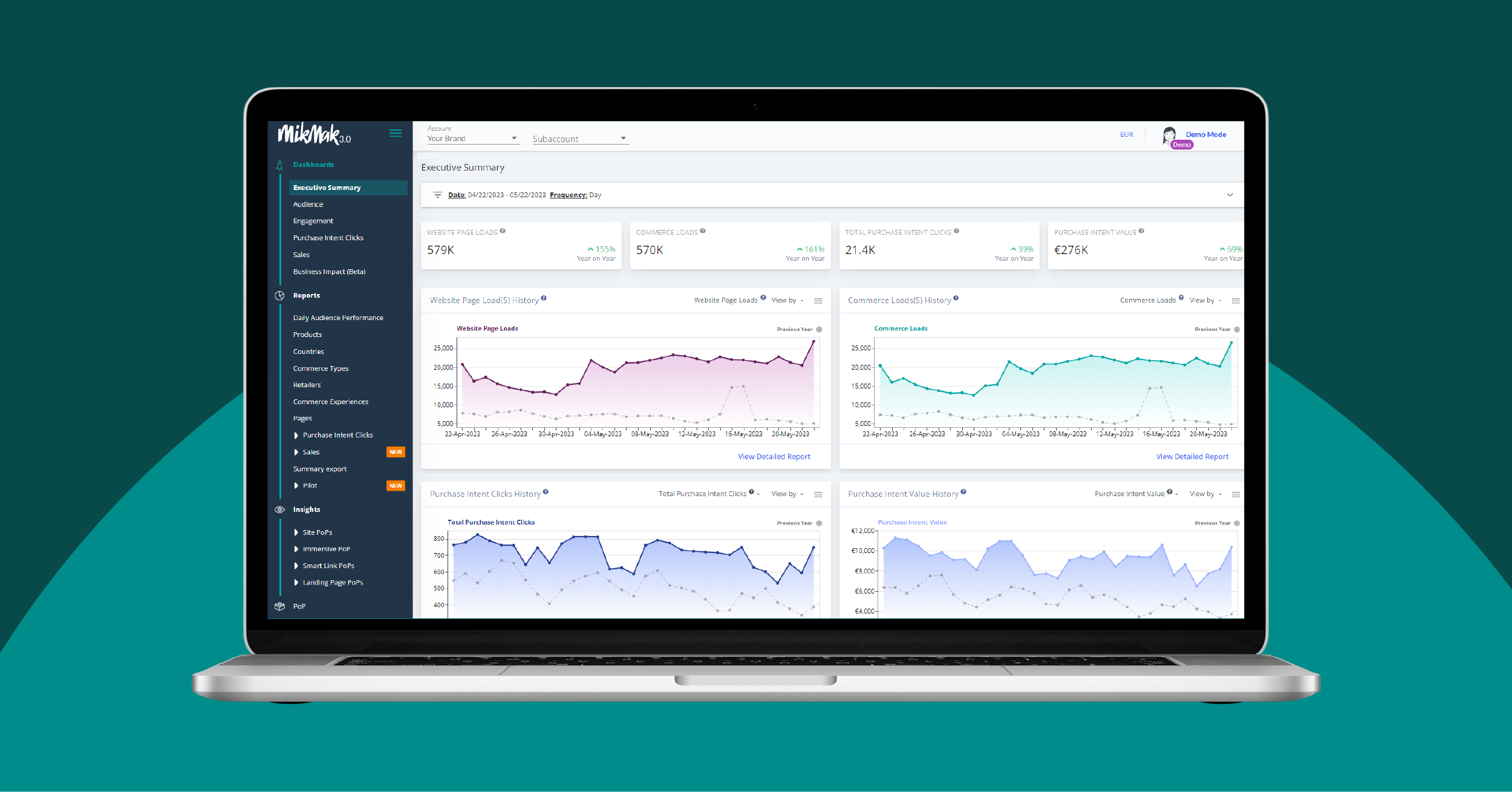
MikMak Insights
Exclusive First-Party Consumer Insights
Multichannel eCommerce analytics help brands develop and apply eCommerce strategies that work, with a complete understanding of consumers' online behavior and preferences.
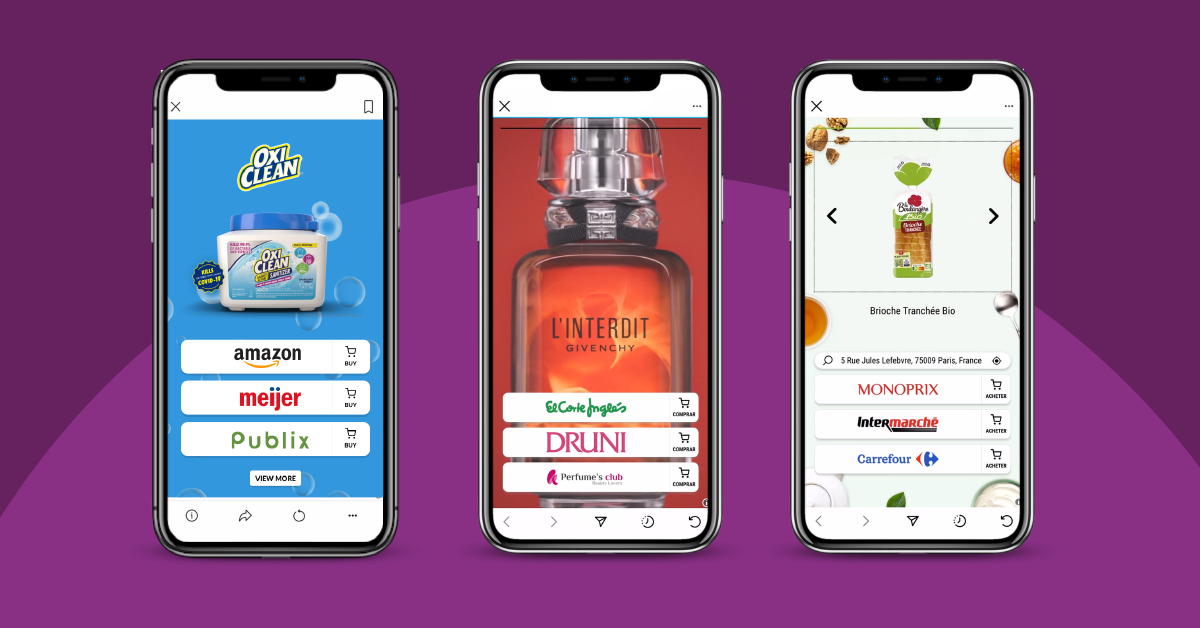
MikMak Commerce
Premium Consumer Shopping Experiences
A seamless path to checkout at any retailer, from anywhere across your entire media mix, including social media, retail media, brand websites, search, CTV, display, QR codes, and more.
How MikMak helps other brands succeed
Sabra drove higher purchase intent than competitors and improved media efficiency by leveraging MikMak Insights to make campaign optimizations.
"MikMak has fundamentally changed how Sabra does marketing, and even improved our overall sales by 14%. Now, we understand full-funnel marketing. We can see what channels, audiences, and objectives move someone towards purchase. We even take those insights outside of MikMak, and have evolved how we work with retailers. MikMak has even impacted our agency partners’ thinking."
- Chief Marketing Officer, Sabra
- 2x Increase in Purchase Intent Rate after switching campaign objectives
- +86% Increase in Purchase Intent Rate after updating campaign creative
- +50% Higher Purchase Intent Rate than the Grocery vertical
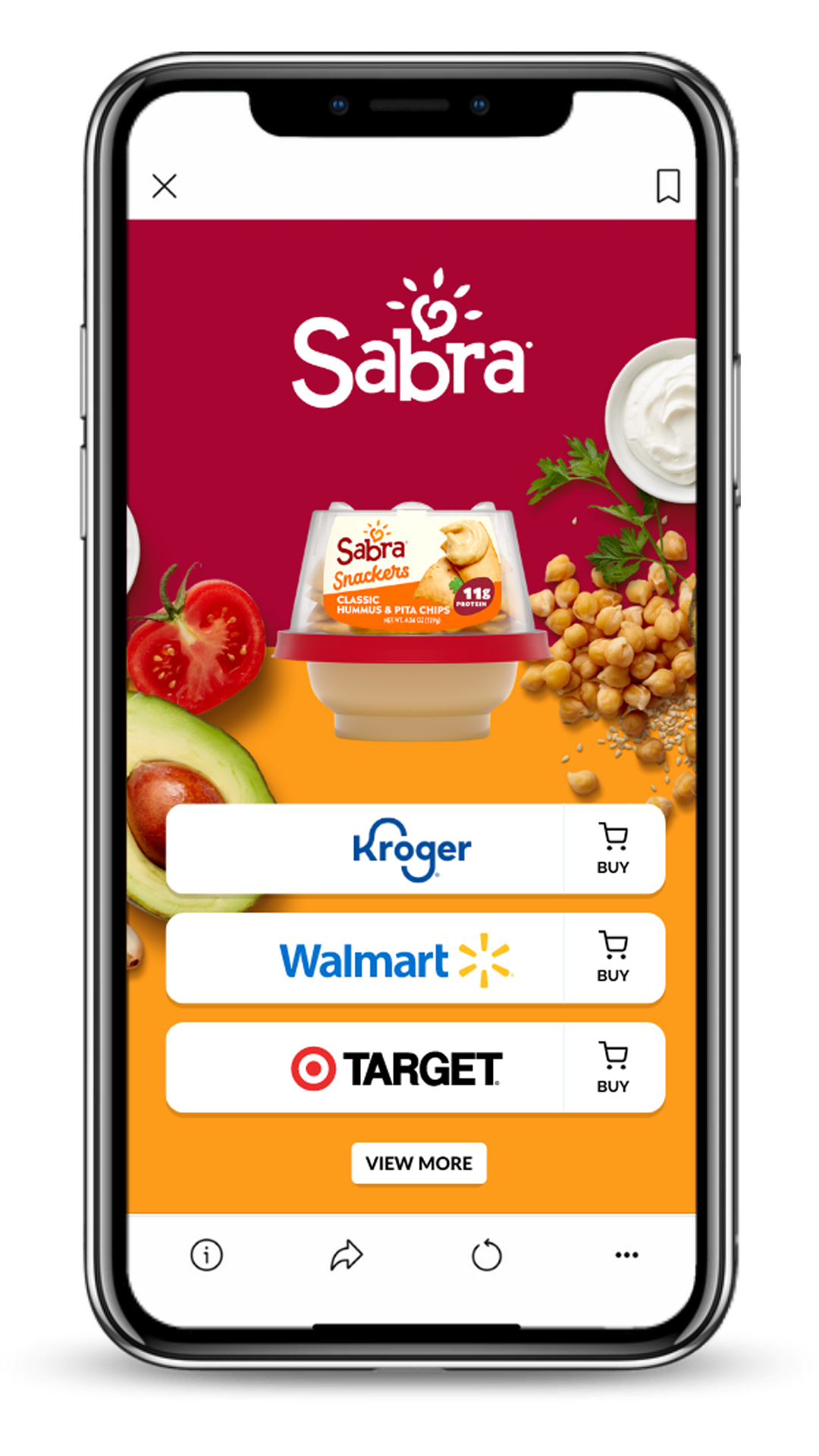
Ricola leveraged MikMak to quickly launch shoppable influencer campaigns across Instagram and TikTok to connect consumers to their products during the key cold and flu season.
In an effort to better connect with consumers, Ricola wanted to run influencer marketing campaigns across top platforms like Instagram, TikTok, and Snapchat. Social media influencers’ recommendations are trusted by 61% of shoppers per Businesswire.
- 2.8x Higher Purchase Intent Rate on TikTok compared to the Health category average
- 1.6x Higher Purchase Intent Rate by top performing influencer @_jkrow over the brand average
- 55% Of consumers interacting with Ricola influencers prefer to shop at Target
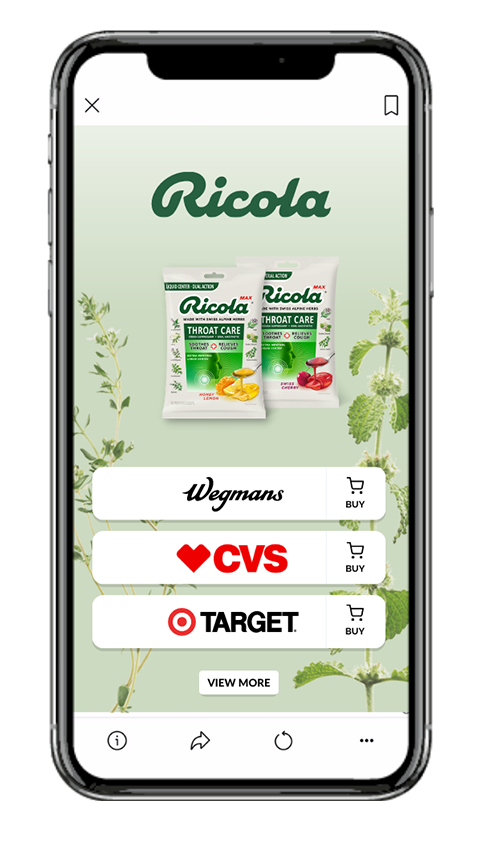
BodyMark by BIC increases consumer engagement and sales by using MikMak Insights to identify shoppers' preferred media platform and creative.
"With MikMak I saw the opportunity to provide shoppers with a seamless path to purchasing our products online while gaining valuable and actionable data and insights for BIC. The results have been tremendous - we've seen huge lifts in engagement, sales, media performance, and even customer ratings and reviews."
- Global Business Director, BodyMark by BIC
- 968% Lift in Attributable Sales post-MikMak optimizations
- 5x Increase in Purchase Intent Rate post-MikMak optimizations
- 10x Higher Purchase Intent Rate on Instagram compared to category benchmark
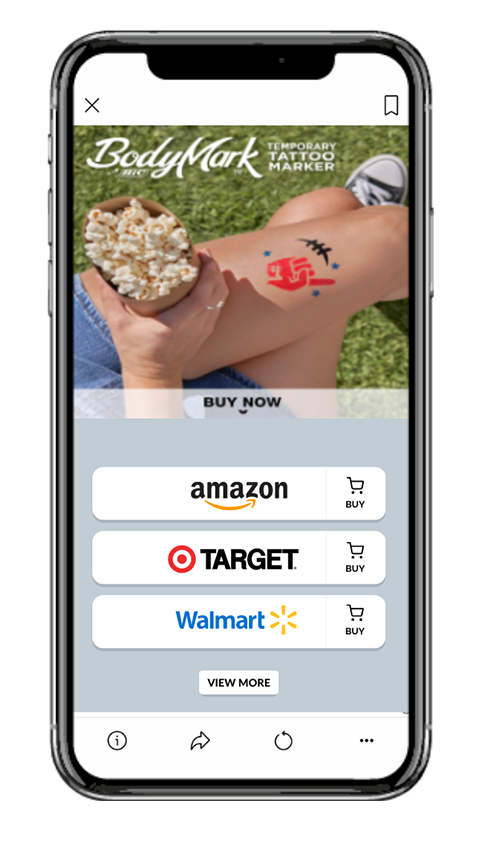
Clairol drove a major lift in sales at Target by leveraging MikMak Sales Insights to inform creative, messaging, and landing page optimizations.
Clairol was planning to execute two promotional campaigns at Target: the first from March 31st to April 9th, and the second from May 16th to May 31st. The Clairol team wanted to leverage MikMak Commerce to highlight the promotional messaging in the post-ad click experience, while also being able to measure SKU preference, conversion, and sales lift at Target. While the promotion was Target specific, Clairol wanted to feature multiple retailer options in the MikMak Commerce experience.
- 2.4x Lift in Sales after testing and implementing new creative
- 16x Increase in Purchase Intent Rate after implementing creative changes
- 66% Of Purchase Intent from MikMak- powered Audiences
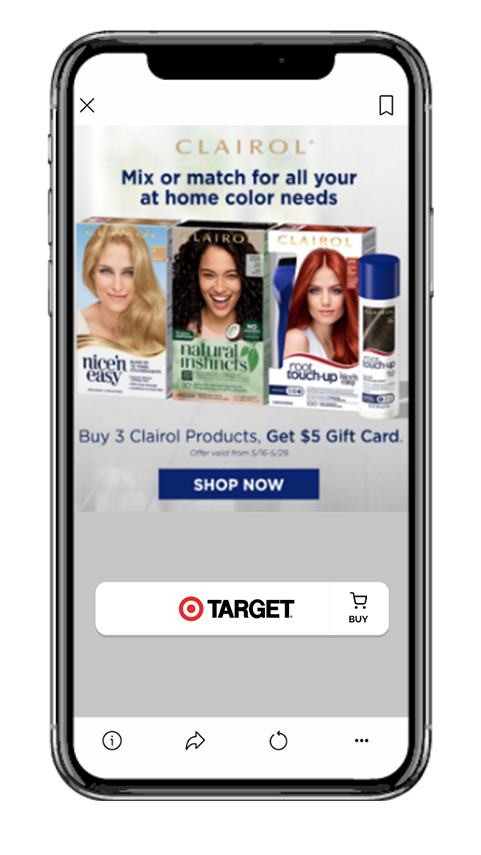
OxiClean drove category-leading purchase intent by leveraging MikMak on a YouTube Video for Action* activation during the key cold and flu season.
With high brand awareness, but low household penetration, OxiClean needed to bring in new consumers. To help drive growth, they developed OxiClean Sanitizer during the peak of Covid, hoping to capitalize on germ fears and high consumer demand.
- 23% Higher Purchase Intent Rate vs. category benchmark on Youtube Video for Action
- 72% Lower cost per conversion vs Q1-22 YouTube Select**
- +2.2% Lift in Awareness vs. Q1-22 YouTube benchmark
*YouTube Video for Action is an offering that allows brands to create and place simple, conversion focused campaigns right within the platform
**YouTube Select is the platform’s premium ad offering that provides YT TV and more targeted ad placement
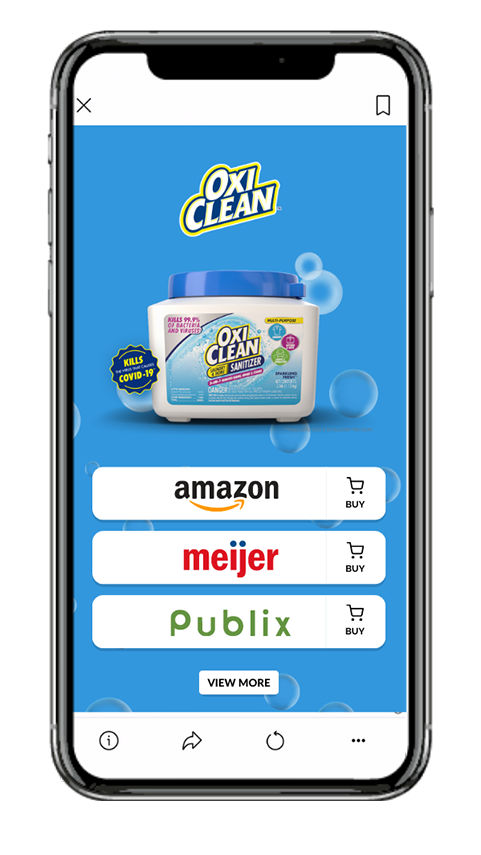
Our retailer and media partners
Media











Retailers












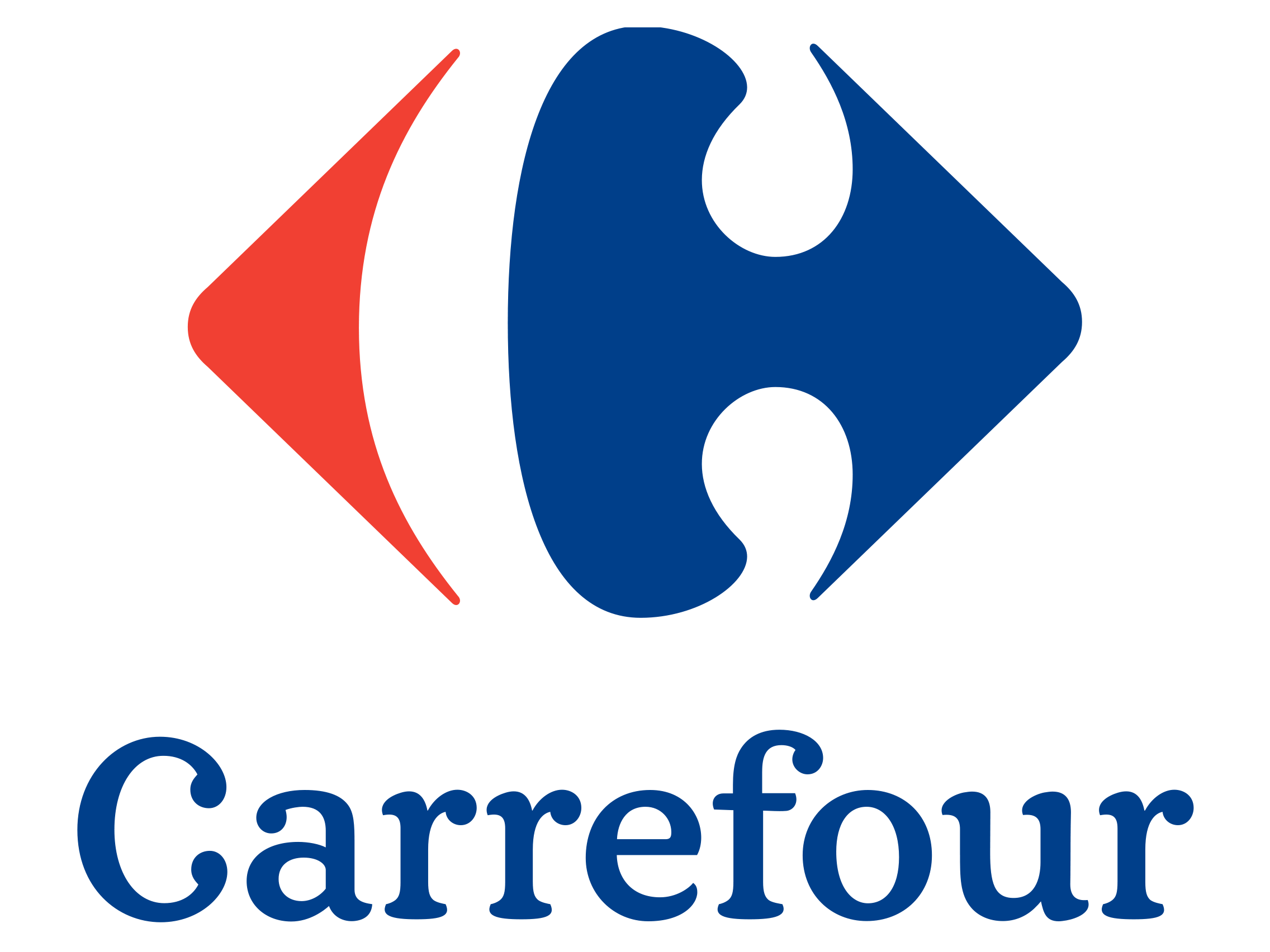








eCommerce Research and Resources

How to Power Up Marketing Profitability for Consumer Electronics Brands
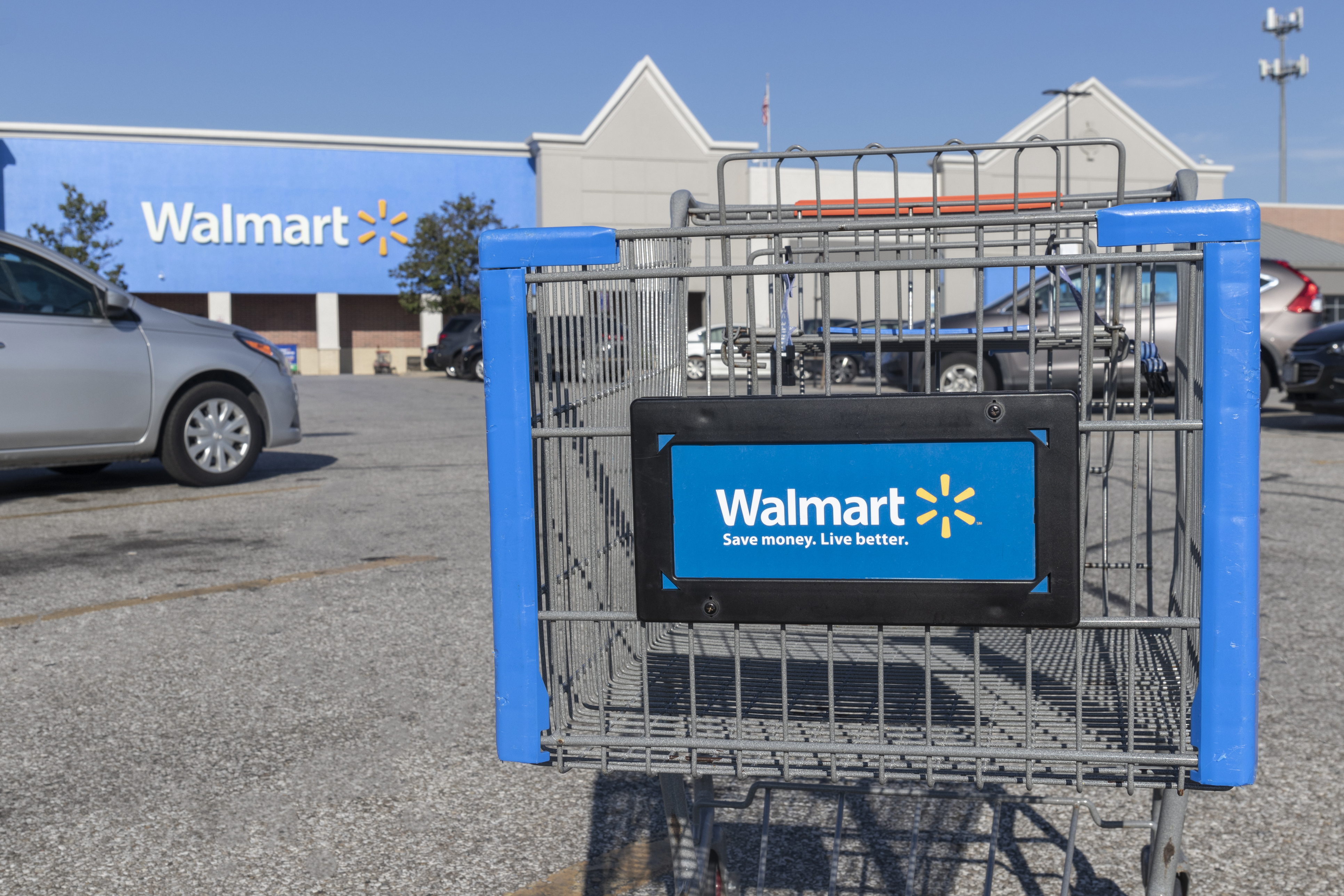
eCommerce Marketing Insights Reveal How to Attract Walmart’s Growing Crowd of Shoppers
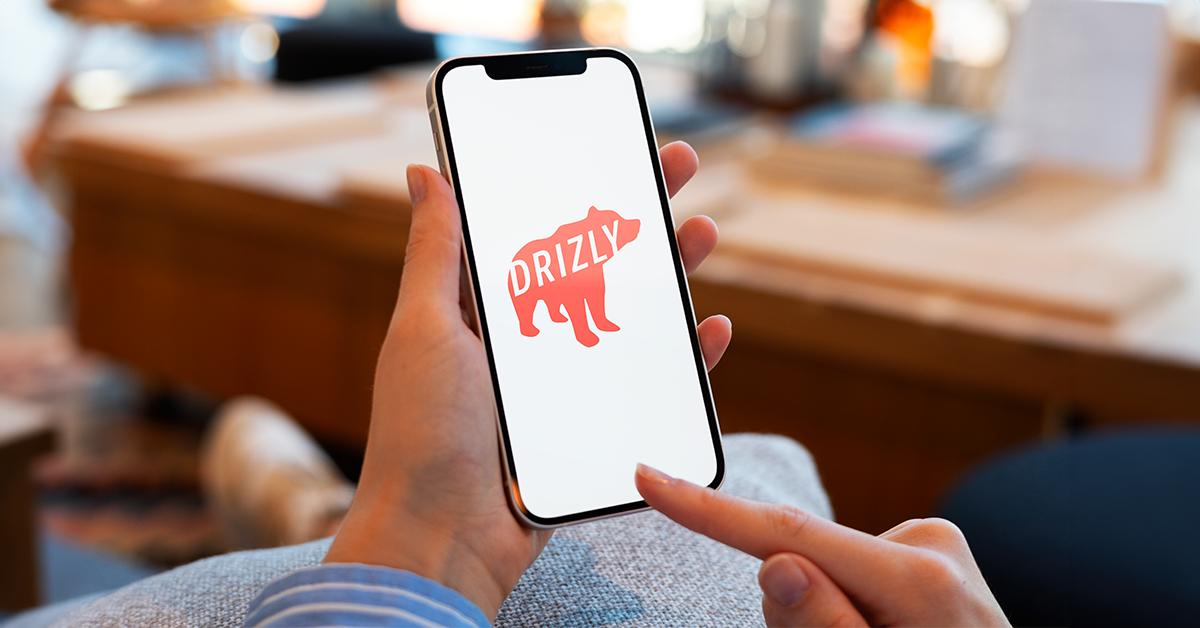
Drizly’s Last Call: Retailer Preference Shifts for the Future of Alcohol Brands

Maximizing eCommerce Success: Crafting RFPs for Shoppable Media and Where-to-Buy Solutions

MikMak’s Latest Platform Enhancements, Including Headless Commerce API and Custom Analytics
